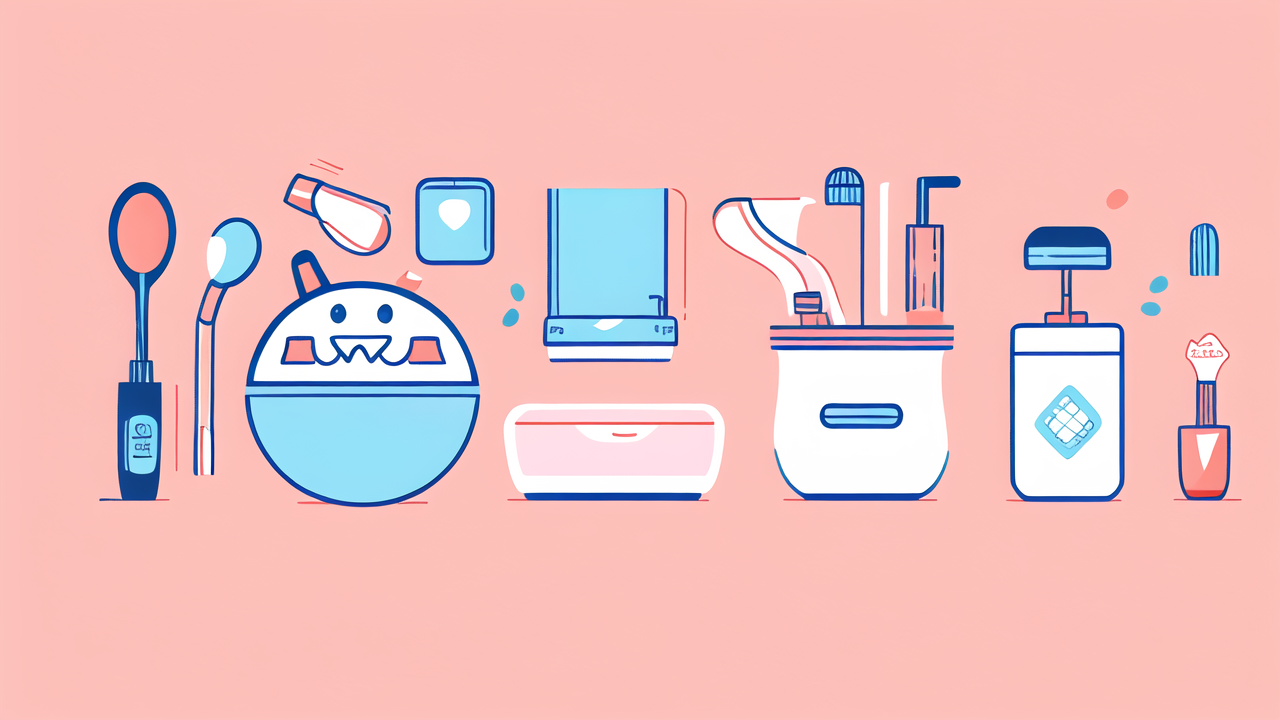
Promoting Good Oral Hygiene: Best Children's Toothbrushes for Every Age
Choosing the Right Toothbrush for Your Child
Understanding Toothbrush Types and Their Uses
Choosing the right toothbrush for your child is crucial for their oral health. There are several types to consider:

- Manual toothbrushes: Simple and effective for all ages.
- Electric toothbrushes: Can make brushing more fun and thorough.
- Battery-operated brushes: A middle ground between manual and electric.
Each type has its pros and cons. Manual brushes are cheap and portable. Electric ones can clean better but cost more. Battery-operated brushes offer a mix of both worlds.
Consider your child's age and preferences when picking a brush. Younger kids may prefer colorful, character-themed brushes. Older children might like the novelty of an electric brush.
The Importance of Choosing the Right Grit
Grit refers to the softness or hardness of toothbrush bristles. For children, soft bristles are usually best. They clean effectively without hurting sensitive gums.
Very soft bristles are ideal for babies and toddlers. As kids grow, they can use soft to medium bristles. Hard bristles are not recommended for children. They can damage young teeth and gums.
The right grit helps remove plaque without causing harm. It makes brushing more comfortable for kids. This can encourage them to brush regularly. Remember, gentle brushing with soft bristles is key for good oral health.
Characteristics to Look for in Children's Toothbrushes
When shopping for a child's toothbrush, keep these features in mind:
- Size: The brush head should fit comfortably in your child's mouth.
- Handle: Look for a non-slip grip that's easy for small hands to hold.
- Bristle design: Angled or multi-level bristles can clean hard-to-reach spots.
- Fun features: Bright colors or favorite characters can make brushing more appealing.
- ADA Seal: This ensures the brush meets safety and effectiveness standards.
A good brush should be both functional and appealing to your child. It should make brushing easier and more enjoyable. This can help establish good oral hygiene habits early on.
The Best Children's Toothbrushes on the Market
Top Picks for Toddlers and Preschoolers
For toddlers and preschoolers, these toothbrushes stand out:

- Oral-B Pro-Health Stages: Features Disney characters and soft bristles.
- Philips Sonicare for Kids: An electric brush with fun app integration.
- Jordan Step 1 Baby Toothbrush: Designed for tiny mouths and hands.
- Brusheez Children's Electric Toothbrush Set: Comes with a fun animal-themed stand.
These brushes are designed for small mouths and developing motor skills. They often have larger handles and smaller brush heads. Many feature bright colors or cartoon characters to make brushing fun.
Remember to supervise young children while brushing. Help them develop good habits early on. Make brushing a positive, regular part of their daily routine.
Best Options for School-Age Kids
For school-age children, consider these top-rated toothbrushes:
- Philips Sonicare for Kids Bluetooth: Connects to a fun app for better brushing habits.
- Oral-B Kids Electric Toothbrush: Features popular characters and a pressure sensor.
- quip Kids Electric Toothbrush: Sleek design with timed sonic vibrations.
- Colgate Kids Extra Soft Manual Toothbrush: Simple, effective, and budget-friendly.
These brushes cater to more independent brushers. They often have features to encourage proper brushing time and technique. Many come with timers or apps to make brushing more engaging.
At this age, kids can start to brush on their own. However, parents should still check their technique regularly. Encourage them to brush for a full two minutes, twice a day.
Options for Teens and Pre-teens
For teens and pre-teens, these toothbrushes are excellent choices:
- Oral-B Pro 1000: An affordable electric brush with multiple cleaning modes.
- Burst Sonic Toothbrush: Sleek design with charcoal-infused bristles.
- Fairywill Electric Toothbrush: Budget-friendly with multiple brush heads.
- Philips Sonicare ProtectiveClean 4100: Advanced cleaning with pressure sensor.
These brushes offer more advanced features. They're designed to appeal to older kids and teens. Many have multiple brushing modes and longer battery life.
Teens should be able to brush independently. However, remind them of the importance of regular brushing. Encourage good habits like brushing twice daily and flossing.
Maintaining Your Child's Dental Health
Tips for Teaching Children to Brush Their Teeth
Teaching kids to brush properly is crucial. Here are some helpful tips:

- Start early: Introduce brushing as soon as the first tooth appears.
- Make it fun: Use songs, games, or apps to make brushing enjoyable.
- Lead by example: Let your child see you brushing regularly.
- Use positive reinforcement: Praise good brushing habits.
- Teach proper technique: Show how to hold the brush and move it correctly.
Remember to be patient. Learning good brushing habits takes time. Keep the experience positive and consistent. This will help your child develop lifelong oral health habits.
How to Ensure Regular Brushing
Consistency is key for good oral health. Here's how to encourage regular brushing:
- Set a routine: Brush at the same times each day, like after breakfast and before bed.
- Use a timer: Ensure they brush for a full two minutes each time.
- Create a reward system: Offer small rewards for consistent brushing.
- Make it a family activity: Brush together to reinforce the habit.
- Use visual reminders: Put a chart in the bathroom to track brushing.
Regular brushing helps prevent cavities and gum disease. It also teaches kids the importance of self-care. Keep encouraging and supporting your child's brushing routine.
When to Replace Your Child's Toothbrush
Knowing when to replace a toothbrush is important for maintaining oral health. Here are some guidelines:
- Every 3-4 months: Replace the brush or brush head regularly.
- After illness: Change the brush to prevent reinfection.
- When bristles are frayed: Worn bristles don't clean effectively.
- If the child chews on the brush: This can damage bristles and reduce cleaning power.
Regular replacement ensures the brush works well. It also helps prevent bacteria buildup. Make changing toothbrushes a fun event. Let your child pick out their new brush.
Remember, a good toothbrush is just one part of oral health. Regular dentist visits and a healthy diet also play key roles. With the right tools and habits, you can help your child maintain a healthy smile for life.
